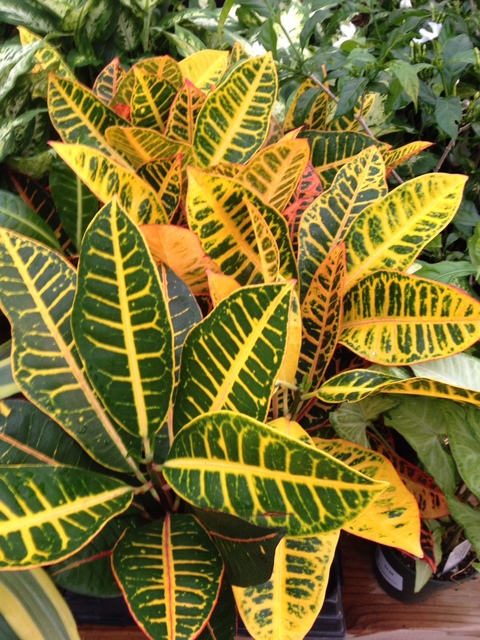Fall officially has arrived in the northern hemisphere. As the sun moves farther from us, days are shorter and plants tend to slow their growth. ADVERTISING Fall officially has arrived in the northern hemisphere. As the sun moves farther from
Fall officially has arrived in the northern hemisphere. As the sun moves farther from us, days are shorter and plants tend to slow their growth.
Another occurrence on the mainland is the lunar eclipse combined with the moon being closest to the Earth so it will appear to be 14 percent bigger and 30 percent brighter than when it is most distant.
Thus, it is referred to as the “Super Moon.” This particular moon also is called the “Blood Moon” because of its orange to red tone.
Living in Hawaii, even though we don’t see the brilliant fall colors in forests and gardens of the mainland, we can improvise. This year, with all the rain, even West Hawaii is green. So, now is the time for nursery and garden store hopping.
You can find some great ideas for bringing the feeling of fall into our gardens.
Where nights are cool and days frequently cloudy, try some of the fancy new imaptiens hybrids. The New Guinea hybrids are especially attractive. These new hybrids are much more compact and flower abundantly. They come in all flower colors and also have multicolored leaves. Other impatiens on the market include the traditional types hybridized to be compact and floriferous.
Fall in Hawaii is colorful with African tulip, royal poinciana, chorisia, timor and rainbow shower trees in bloom, but things could be a lot brighter with the addition of crotons, bougainvillea and hibiscus just to mention a few.
Besides the many tropical ornamentals trees and shrubs available, you also might consider colorful annuals and perennials to brighten your winter garden or lanai.
Many of the annual summer flowers prized most on the mainland are at their best here from November to May. These annuals usually are tolerant of cool weather. Since the winter temperature never gets extremely low, they thrive here, especially at higher elevations. Some, such as the marigold, are great all year. They are especially good for sunny drier locations.
The marigold is native to the Southwestern United States and Mexico. It grows well and is popular in every state and in every civilized country of the world.
Many different types of marigolds, from big flowered American and smaller flowered so-called “French,” odor and odorless, are available at your local garden supply store.
Marigolds, zinnias, petunias and many other annuals with bright blooms are natural for adding color. You also can expand the beauty and interest of your floral borders by including low maintenance foliage plants.
What are some of the best to add color and texture contrast?
Coleus immediately comes to mind and is probably the most popular. Little wonder, it’s so versatile and vivid. The plants with their brilliantly patterned leaves are flashy in sun or shade. You’ll especially appreciate how coleus can transform problem shady spots into rainbows of color. Use it to beautify areas along the north or east sides of your house or garage or in containers on shady porches or patios, even under trees.
Coleus can take direct sun in cooler gardens. Coleus is just as much a favorite houseplant as it is a garden subject. It thrives in pots and is easy to propagate by cuttings. Other favorites include the many varieties of begonia, canna, caladium and geranium.
Check out the vast array of seeds and bulbs available at garden stores.
How about a temporary “hedge” or background for annual flowers? Kochia, commonly called burning bush, can be just the answer. The symmetrical plants grow about 2 1/2 feet tall, are oval shaped and resemble small ornamental evergreens. An added bonus is that their fine, light-green foliage turns bright crimson-carmine in cool weather.
Other interesting foliage annuals you’ll want to consider are:
• Euphorbia, or Snow on the Mountain. This is easy to grow in dry soil and is attractive with its refreshing green and white leaves on plants about 2 feet tall.
• Santolia chamaecyparissus, or lavender cotton, makes a nice low hedge. Plants grow about 18 inches tall and have finely divided, aromatic, silvery-gray foliage and small globular yellow flowers. Handled as an annual in the north, this is a perennial in Hawaii.
You can sow seeds of such annuals in boxes, pots or outdoors. If you use some sort of container, make certain drainage is good.
You can sow the seeds in vermiculite, peat moss, sand or mixtures of these. You also can buy plants already started at several garden stores and nurseries in the area.
If you start your own plants, water them when seeds are in place and cover containers with a piece of glass or plastic. Place the container in a protected location away from direct sunlight. In a few days, the seed will germinate and more light will be needed to prevent leggy and poorly colored seedlings.
When the first pair of true leaves develop, it is time for transplanting. Set the tiny plants in pots or plant bands. Later, plant them outdoors in their permanent location.
Using your creativity, you can brighten your home and garden all “winter” long.
This information is supplied by the University of Hawaii College of Tropical Agriculture and Human Resources.



